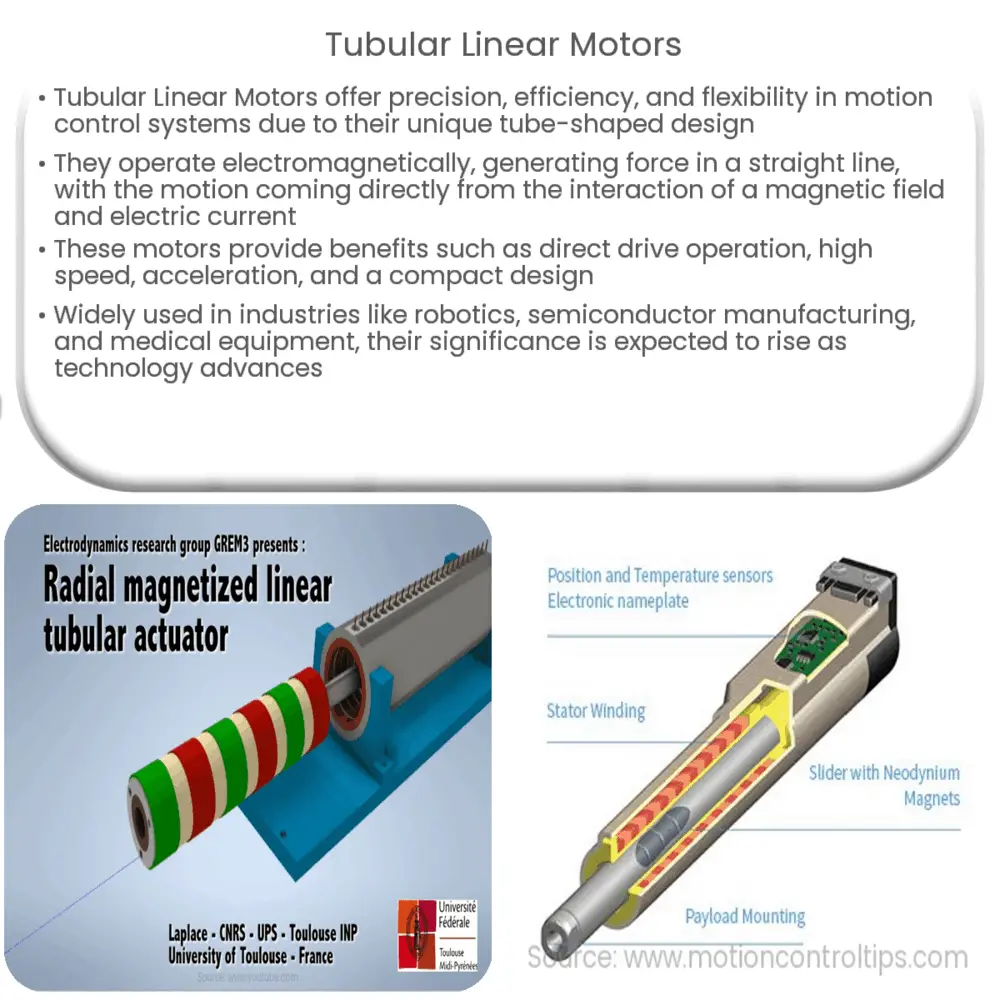Explore the working principle, benefits, and applications of Tubular Linear Motors, a key technology in precision motion control systems.

Introduction to Tubular Linear Motors
When it comes to precision, efficiency, and flexibility in motion control systems, Tubular Linear Motors are often an excellent choice. As the name implies, these are linear motors – devices that generate force and motion directly in a straight line – but with a unique, tube-shaped design that confers several advantages over other forms.
Working Principle of Tubular Linear Motors
Tubular Linear Motors are electromagnetic devices. They work on the basic principle of a magnetic field interacting with an electric current to produce force. However, unlike rotary motors that convert this force into a circular motion, Tubular Linear Motors apply this force directly along a linear path.
- The motor consists of a rod-shaped ‘forcer’ (usually magnetically active) that moves linearly within a stator made up of coil windings.
- When electric current passes through the coil windings in the stator, it generates a magnetic field.
- This magnetic field interacts with the magnets in the forcer, resulting in a linear force that moves the forcer along the length of the stator.
Benefits of Tubular Linear Motors
Thanks to their specific design and operation, Tubular Linear Motors offer several benefits over other types of linear and rotary motors.
- Direct Drive: Since Tubular Linear Motors provide motion directly without the need for mechanical transmission elements like gears or belts, they offer high precision and reduced mechanical complexity.
- High Speed and Acceleration: They can attain high speeds and accelerations, making them suitable for applications demanding fast, precise movements.
- Compact and Flexible Design: The tubular design allows for a more compact motor structure. This flexibility makes these motors adaptable to a wide range of applications, including ones with limited space.
The attributes mentioned above make Tubular Linear Motors an attractive solution in industries like robotics, semiconductor manufacturing, medical equipment, and more, where precision, speed, and space economy are paramount.
Applications of Tubular Linear Motors
Given the advantages offered by Tubular Linear Motors, they find use in a multitude of sectors where precision and speed are crucial.
- Robotics: These motors offer high precision and controllability, ideal for robotic arms and automation equipment.
- Semiconductor Manufacturing: The semiconductor industry requires extremely precise movements for manufacturing processes, something these motors can efficiently deliver.
- Medical Equipment: From MRI machines to precision surgical tools, the compact and precise nature of Tubular Linear Motors is highly beneficial.
- Packaging Industry: High speed and precision in a compact design also make these motors useful in packaging machinery.
The Future of Tubular Linear Motors
As we continue to advance in technology, the demand for more precise, efficient, and compact machines is increasing. Tubular Linear Motors, with their host of advantages, are poised to play a significant role in this future.
Research and development efforts are ongoing to enhance their performance, reduce their cost, and expand their applications. For example, there is a strong interest in developing smaller, more energy-efficient models suitable for applications in areas like consumer electronics and wearable devices.
Conclusion
In conclusion, Tubular Linear Motors are a compelling technology in the field of motion control systems. With their unique combination of direct drive operation, high speed and acceleration capabilities, and a compact, flexible design, they provide an efficient solution for a range of applications requiring precision and quick response. As technology continues to advance, the adoption and evolution of these motors are expected to grow, underlining their importance in the future of various industries.

